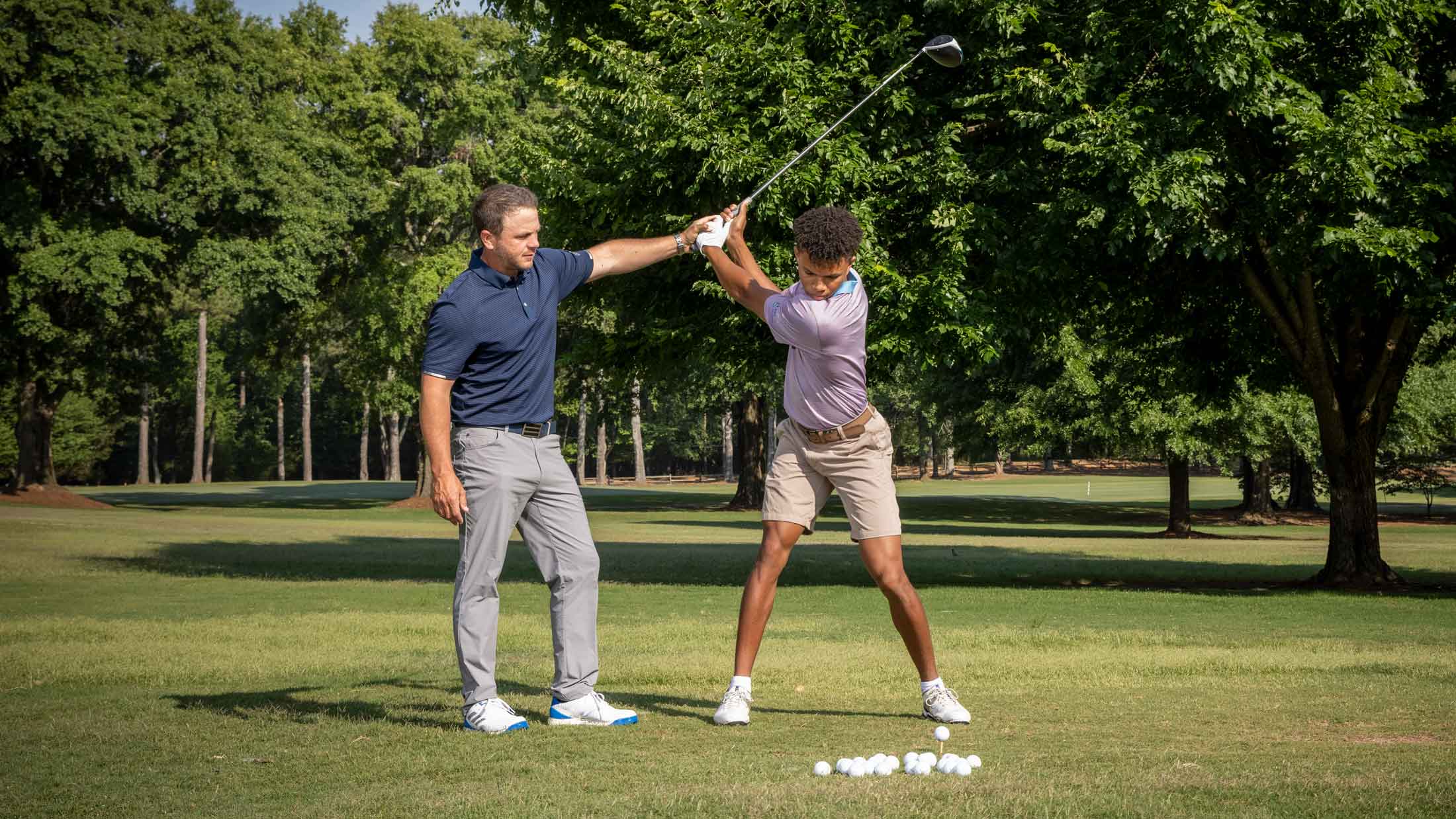Welcome to Part 2 in our three-part series on how to get the most out of golf lessons. In Part 1, we explained how to book lessons, find a teacher you connect with and how much you should expect to pay. Here, with the help of GOLF.com’s instruction partner, GOLFTEC, we look at the importance of consistent training and practice — and the results you can expect from staying the course.
***
As with the swing itself, timing is everything when it comes to golf lessons. At GOLFTEC, students ideally take lessons on the same day and at the same time each week.
“I think everyone should do it that way,” said Kevin Tanner, a PGA Master Professional and GOLFTEC regional manager in Bethesda, Md. “Regardless of practice time or playing time, it’s about consistency. Lessons are almost a supervised practice to some degree, just with an instructor watching. If you’re not scheduled weekly, too much time can pass without a lesson, and that often leads to bad habits that you may not even realize are creeping in to your swing.”
How quickly you can expect to improve
The golf lesson equivalent of “Are we there yet?” is “How quickly can I improve?”
GOLFTEC data shows that students typically see a seven-shot improvement on average within a year of consistent lessons. The pace of improvement, however, depends on your own physical awareness.
“Students who have been playing for a long time without instruction just don’t know how to formulate good decisions out on the course,” Tanner said. “Once we teach them what is happening, why it’s happening, and here’s how to change it, then they can improve really quickly and see huge decreases in score.”
Swing evaluation for GOLF.com readers
Some improvements come faster than others. “Ball flight can be changed within a single lesson,” Tanner said. “And I can teach you how to draw or fade the ball within one lesson. But the skill level to be able to control those shots and predict the outcome consistently is another variable that needs to be learned. That just takes more time.”
So does shaving strokes.
“In the rare instance where someone is just losing a lot of balls off the tee, and we can fix their driver, then they can drop scores relatively quickly,” Tanner said. “But it can be more complicated with short-game issues, putting problems, or even poorly fit equipment. Addressing those takes more time.”
Why a better swing doesn’t always mean better scores
“You have to be able to measure stuff,” Tanner said. “Just hitting balls out on the range with no technology can make it very difficult to analyze what’s going on and provide good recommendations for what to do next.”
Setting a baseline that will verify improvement over time can easily be done indoors.
“Doing it there eliminates many extraneous variables,” Tanner said. “You don’t have to worry as much about where the ball is going or the weather, and you can measure everything you need to build a plan.”
One major misconception is that improving your full swing automatically means lower scores. Not always, Tanner said.
“A lot of times we improve the full swing and students start hitting the ball better but end up in worse situations,” he said. “They had gotten used to playing a certain way and they were hitting it so far offline they were missing bunkers. Then they start hitting it better but are getting into those bunkers, or maybe hitting shots closer to the hole and don’t know how to play the next shots.”
And, yes, it’s natural to get frustrated when sought-after improvements don’t come immediately.
“I’m totally fine with people getting upset about bad results if they really are bad results,” Tanner said. “If I see a typical slicer lose five balls that were all hooks into the trees left, I’d say that’s unfortunate that you lost five balls, but it’s great that you are making the change. It takes time. Being realistic is critical.”
The value of playing lessons
Students often misunderstand the point of a playing lesson, Tanner said.
“It’s less about score and more about assessing where their skill set is at a specific time,” he said. “As a coach, I’m observing the student’s decision-making process during a playing lesson, what level his or her skills are at, and what areas need to be focused on in future lessons.”
So if you’re really struggling with your short game or ball flight, forget the playing lesson and stick to lessons on the practice tee or green until you see some improvement. That’s all part of what should be a long-term plan.
“There will be good times and not so good times during the process,” Tanner said. “The goal is to understand your game and know what’s going on in order to make any needed changes.”
